CUBA
January 3 - 11, 2012
* Rural Cuba - before Havana *
Cuba! Our friends, Bill and Sandy Flank of Chappaqua, NY, called and invited us to join them on a Road Scholar (formerly Elderhostel) cultural trip to Cuba in January 2012. Linda has always wanted to see Cuba and be able to talk with the people so it took us less than a day to call Road Scholar and book a place on the tour and then tell the Flanks that they had us as travelling companions once again (in past years: Rhine Boat Trip, China, England Canal Boat , Russia).
We flew to Miami from LAX and checked in at the Courtyard by Marriott where we met our Tour Guides (Jim and “Cuqui”) and the other 24 group members including a reunion with Bill and Sandy. 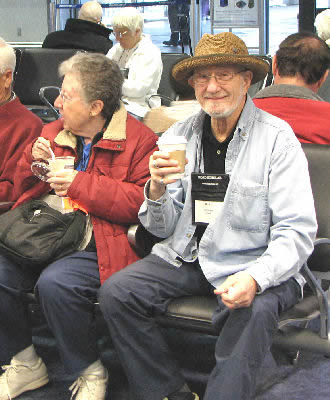 We listened to a lecture on the current state of Cuban-American activity in Florida delivered by Aimee Betancourt, a Cuban-American and political activist, nearly freezing in the process- it was unseasonably cold outdoors and the air conditioning felt as if it was on maximum. Then dinner and to bed, anxious to start the actual trip to Cuba the next day.
We listened to a lecture on the current state of Cuban-American activity in Florida delivered by Aimee Betancourt, a Cuban-American and political activist, nearly freezing in the process- it was unseasonably cold outdoors and the air conditioning felt as if it was on maximum. Then dinner and to bed, anxious to start the actual trip to Cuba the next day.
We met in the hotel lobby at 5:45 am and were driven to the airport for the flight to Cienfuegos. The vans had trouble fining the correct airport portal and we circled the airport twice before being able to get off. A very slow check-in process and then a very long walk to the far end of the terminal- all without breakfast! We grabbed a quick coffee  and breakfast empanada at the gate to the American Eagle twin turboprop that would take us across to Cuba.
and breakfast empanada at the gate to the American Eagle twin turboprop that would take us across to Cuba.

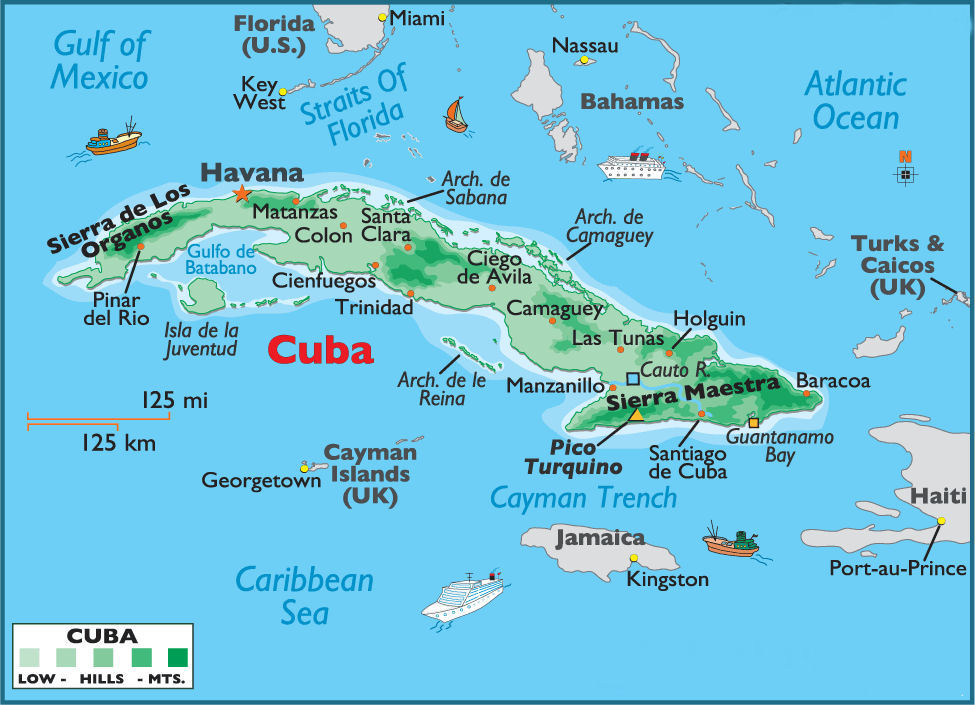

It was cloudy over south Florida and the keys and the 90+ miles across the Gulf of Mexico to Cuba. Arriving at Cienfuegos on the south coast we cleared customs and passport control (no stamp in the passport- 

it was given to us on a separate piece of paper; this action comes from the days when going to Cuba by an American Citizen was considered an illegal act… no border control stamp in the passport- no evidence of being there.
We found a large, practically new, comfortable coach a waiting us where we met our 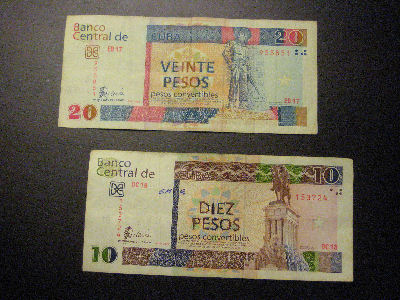 local guide, Hector, who spoke English beautifully. While waiting for everyone to be checked through customs we took the opportunity to change some Euros into Cuban Pesos (dollars had a premium tax added to them so we took Euros with us).
local guide, Hector, who spoke English beautifully. While waiting for everyone to be checked through customs we took the opportunity to change some Euros into Cuban Pesos (dollars had a premium tax added to them so we took Euros with us). 

We were then driven through the city passing old homes and small shacks, all having a severe run-down look. It appeared that several families were living under the same roof.



The coach took us thorough Cienfuegos and out onto a peninsula to where the Hotel Jagua was situated. It was a very
 nice hotel- the best in Cienfuegos with lots of glass and quite clean.
nice hotel- the best in Cienfuegos with lots of glass and quite clean.
The rooms opened off of outside walkways looking out into Cienfuegos Bay and the room had a small balcony looking back towards the city.One of the rooms on the floor above us had a plaque stating the Fidel Castro had used it when in Cienfuegos.
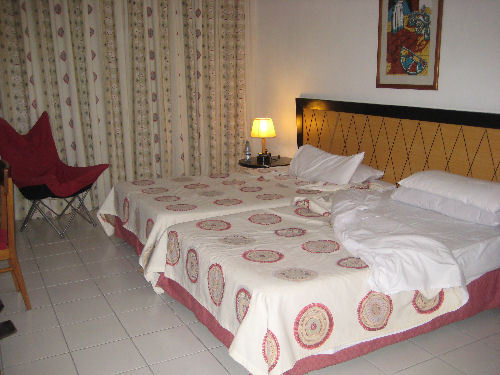


After a lunch at the hotel, we checked into our room which had a beautiful view both out the front door and off of the rear balcony (looking back towards Cienfuegos).
After a brief rest we boarded the coach and drove into the city center and then walked with a running commentary by Hector about its history, architecture and current place within Cuba. There were many people in the streets and they were very friendly.





We went in and out of different stores to see the goods available for sale (a very limited selection) and the prices were, from the Cuban perspective, quite steep – a bed cost 3650 CP (Cuban Pesos- the local currency) which is roughly $40 US – but still about 3 month’s salary to the average Cuban.
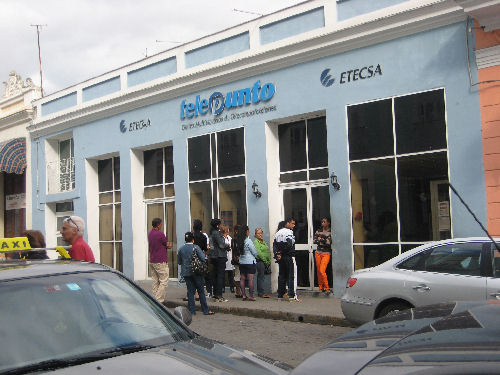
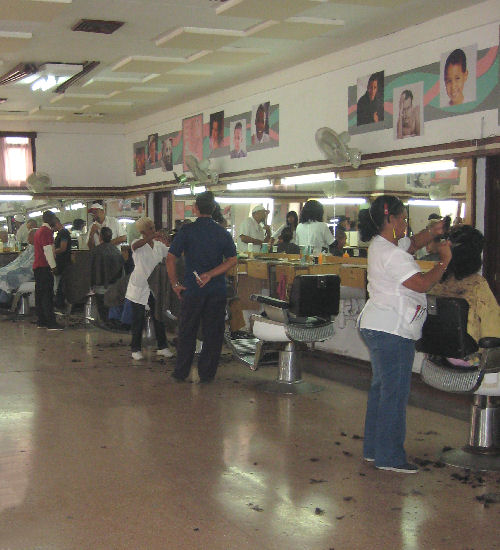

Hector took us into a local museum where we listened to a local acappela singing group ( the Cienfuegos Youthful Gospel Choir – a wonderful performance).

(CLICK on the picture to hear two songs by the choir- about 5 minutes of singing)
We walked into the Parque Marti Plaza and wandered about the square looking at and going into some of the buildings, almost all of them dated to the middle-late 1800’s.

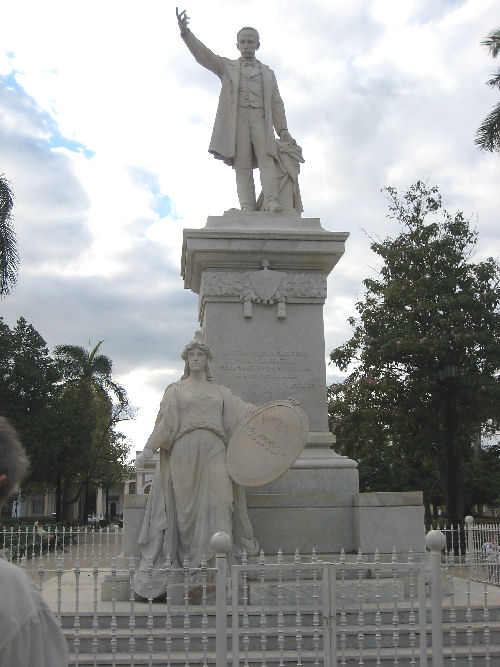
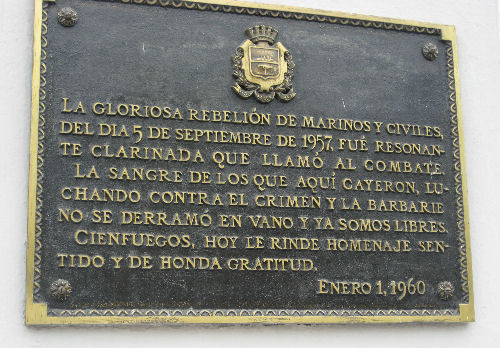
Hector led us into the city’s Thomas Terry Theater, a beautiful building that had a 19th century feel to it.
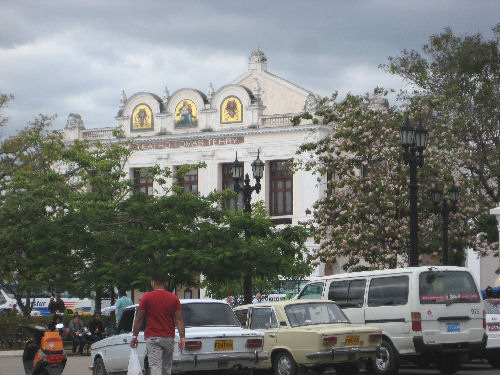
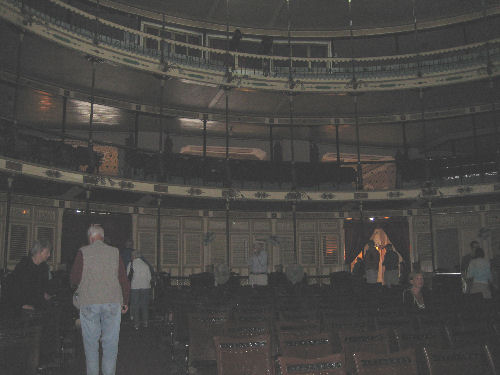
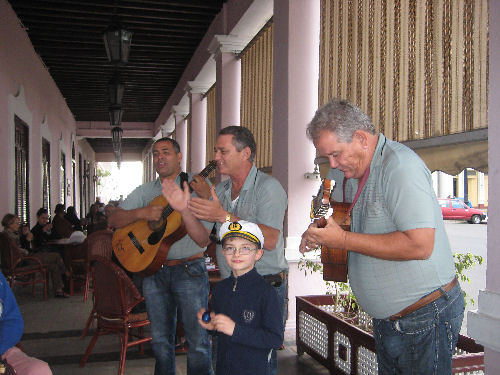 We stopped and listed to a three person group sing on the veranda of a local tavern with Linda joining in a Spanish rendition of “Love Me Tender” with one of the guitarists, and then back to the hotel for dinner in the magnificent building next to the hotel.
We stopped and listed to a three person group sing on the veranda of a local tavern with Linda joining in a Spanish rendition of “Love Me Tender” with one of the guitarists, and then back to the hotel for dinner in the magnificent building next to the hotel.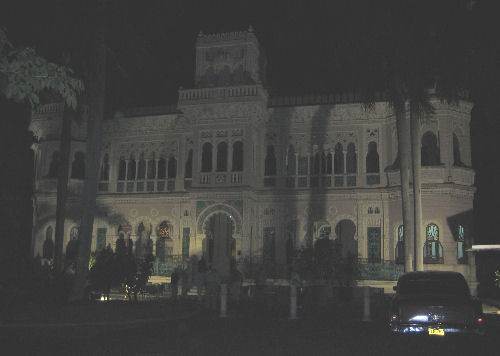
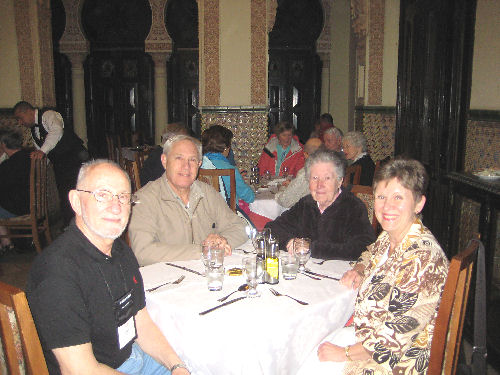
After partaking of the breakfast buffet we boarded the coach at 8:30am for a visit to the Benny Moré Art School where we were entertained by a number of the talented student musicians- guitar, piano, xylophone, coronet and clarinet. Then on to tour some of the school’s dance and art classrooms. Very basic classrooms with few accessories- they were mostly small with paint peeling from walls but full of student projects.
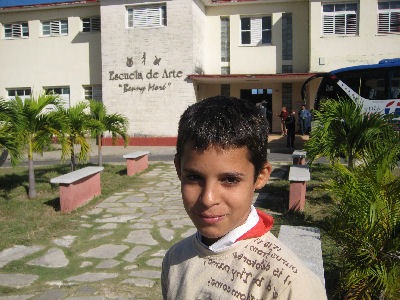



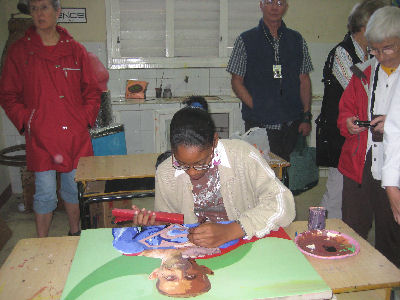
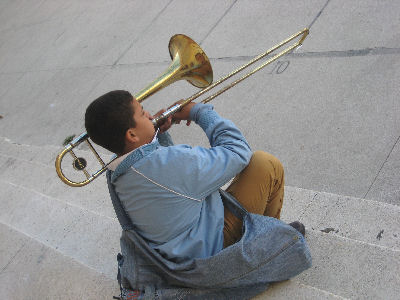
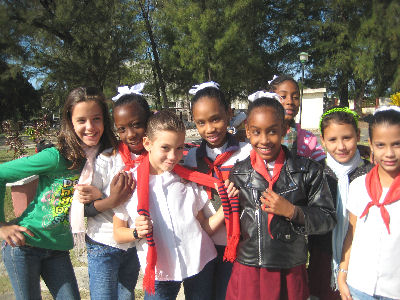
Back onto the bus with kids waving us off and drove from Cienfuegos to the town of Trinidad in the foothills of the local mountains.

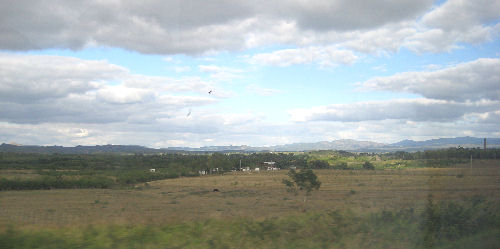


Founded in 1514 Trinidad retains much of its original, old-world charm with cobblestone streets and many historical buildings and old colonial buildings that were built by plantation owners as their “town home.” After a buffet lunch in a local restaurant we walked with Hector through the town.


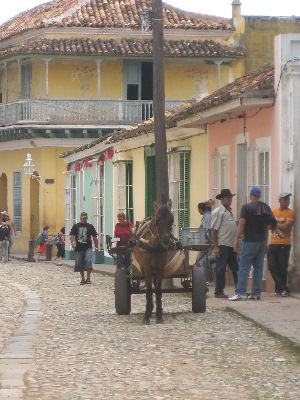
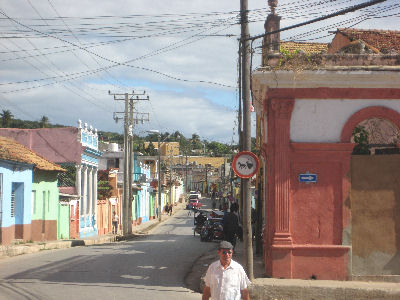
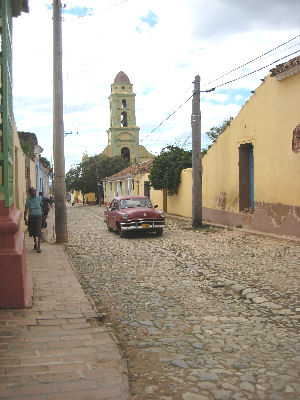
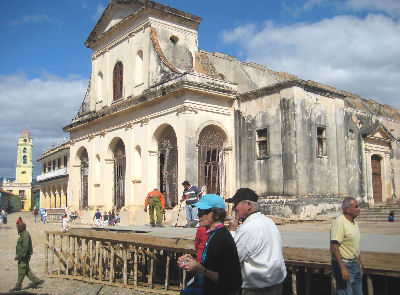
He took us into the La Fábaya Bed and Breakfast, originally a mansion built by a tobacco-grower years earlier. What remains is a house with 3 small rooms for rent facing onto a small inside garden. The grandson is trying to make a success of it but, away from the beach areas, it is quite difficult.

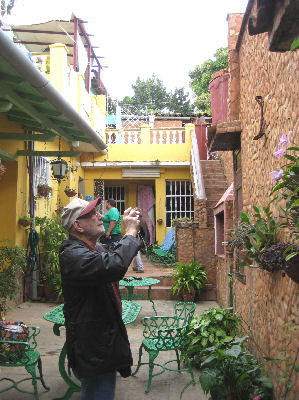
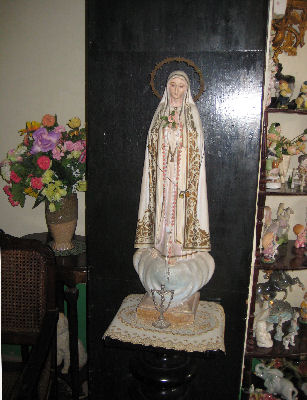

While in the house we could not help but notice the very Cuban blend of religion- plenty of artifacts representing Christianity but tucked away into a corner a small shrine to Santeria beliefs.


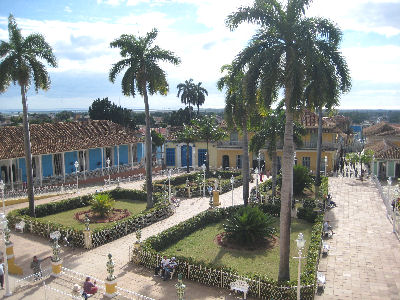 After the visit we wandered by ourselves back to the Playa del Mayor and visited a local museum situated in a house that was built by a Spanish Count who returned to Spain leaving his house to his lawyer. It was filled with antiques from the US, England, Germany, France, Austria, etc- Linda and the guide, Marical, agreed that neither would want to have to dust all of the stuff.
After the visit we wandered by ourselves back to the Playa del Mayor and visited a local museum situated in a house that was built by a Spanish Count who returned to Spain leaving his house to his lawyer. It was filled with antiques from the US, England, Germany, France, Austria, etc- Linda and the guide, Marical, agreed that neither would want to have to dust all of the stuff.
The coach then took us out of town to the remains of a local sugar plantation located in “the valley of the sugar mills.”


There were once 50 sugar mills in operation before the collapse of the sugar industry in Cuba and it is a designated UNESCO World Heritage Site. The plantation house we visited is in the village of Iznuga


and consists of the large main house, a bell tower that was used to call the workers (slaves) and numerous buildings of the slave homes (still used by local families).



Behind the house was a sugar cane press where we were given a demonstration of how the syrup was obtained, with Jon joining Hector in pushing the long arm of the press around and around (the press was made in Buffalo, NY!). We then were given a glass of ‘guarapo’ and rum, a traditional drink. The plantation needed about 500 slaves to keep it operational.

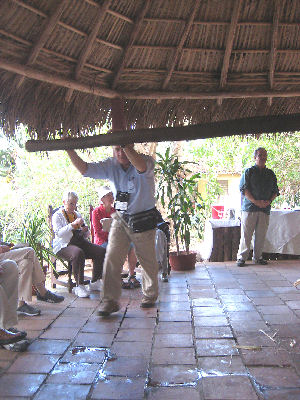

To get to and from the house we had to walk through a gamut of vendors selling hand-made lace, tablecloths and other ware. Although they were persistent they were, also, quite polite. Linda engaged several of the women in conversation and promised to send a map of the US and a Spanish-English dictionary (which we did upon our return to Ojai).
Hector arranged for an invitation into one of the small homes as we walked by and we found it clean but tiny. They had a small bath, a kitchen, two bedrooms and a sitting room- all in roughly 300 square feet. In the rear were several types of fruit trees and a large pig in a cage. Linda compared notes about grandchildren with the grandmother, a warm and loving person who gave big hugs and kisses as we left. It was fun to see a picture of William and Kate up on a wall- a bit of the outside world creeping in.



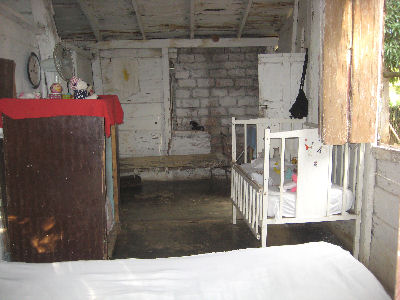

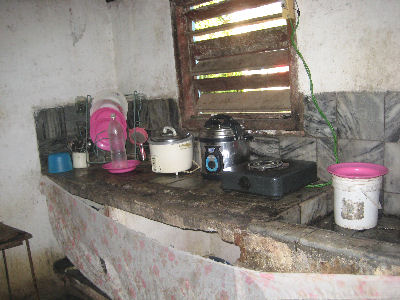

A quiet bus ride back to Cienfuegos and the hotel passing through the outskirts of the city.
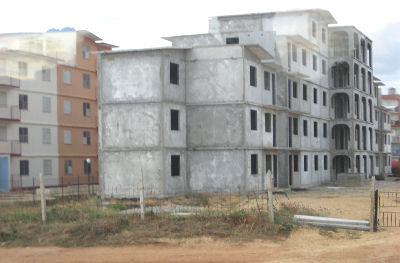
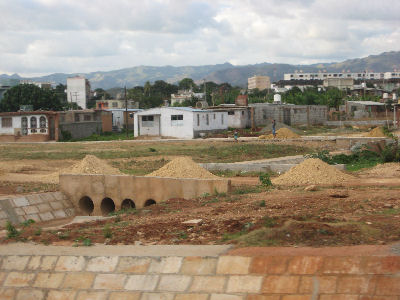

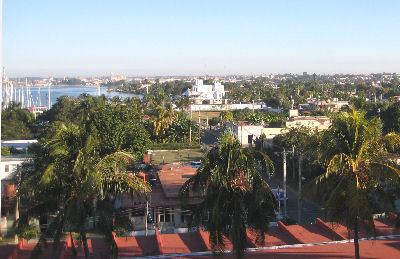

That evening we enjoyed dinner at the nearby yacht club. From our balcony we could see 'racing skulls' exercising on the bay.
In the morning we could see small sailboats moving about off the club’s pier and there were some large sailboats in slips at the club.


After breakfast we loaded into the coach and off to Santa Clara.
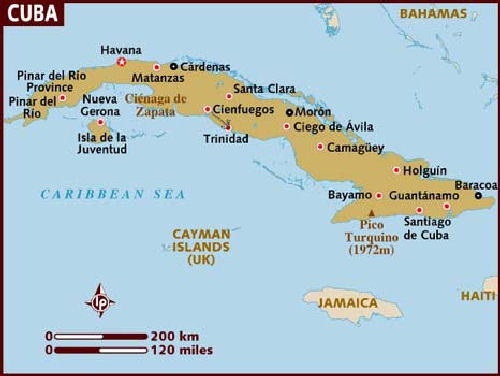 `
`

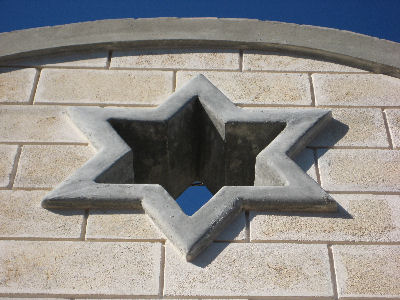

We visited a small synagogue that was under construction and left some of the ‘donations’ the group had brought from with us as “humanitarian aid.’ The president of the synagogue talked with us about the history of Judiasm in Cuba- it is believed that a member of Columbus’ crew was Jewish. After the revolution 90% of the Jews left Cuba, only the old remained.


 We went to the Jewish cemetery and saw the Holocaust Memorial which was designed and sculpted by a local gentile. Several of the local people gathered at the gate to watch us.
We went to the Jewish cemetery and saw the Holocaust Memorial which was designed and sculpted by a local gentile. Several of the local people gathered at the gate to watch us.
We drove into the downtown area which we found to be quite active. They have a theater, a smaller version of the one in Cienfuegos, and a public library.

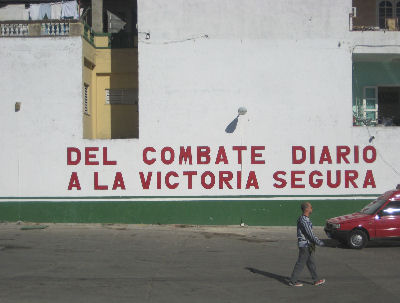




After a short walk we went into the ACAA – the Asociación Cubana de Artistas Artisanas, a group of senor citizens who are involved with the ‘arts’. They meet to sing, dance and play together and even take in children who need looking-after.



We watched as they danced and sang for us and then joined in- dancing, playing games and looking at the beautiful art works they have produced. Linda joined right in but the uneven tile floor was too much for Jon’s knee and he had to be content with watching.
 ( Click on the picture to see some
dancing and singing - 3 1/2 min )
( Click on the picture to see some
dancing and singing - 3 1/2 min )
It was a delightful time with wonderful men and women of ‘Old Cuba.”
Lunch was at Las Caneyes, a beautiful resort 49% owned by a Spanish company (the maximum allowed by Cuban law). We listened to a really good singing group, ‘Las Brillants’, as we ate.

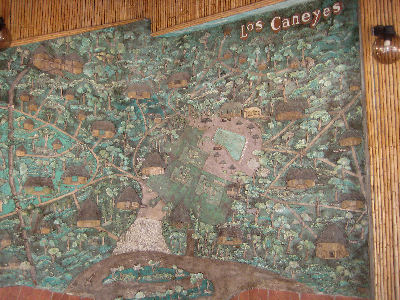

We then were taken to the Che Guevara Memorial in town. It is huge and well done and the place where crowds gather on ‘official’ occasions. We were not allowed to bring purses, cameras or bags into the memorial.
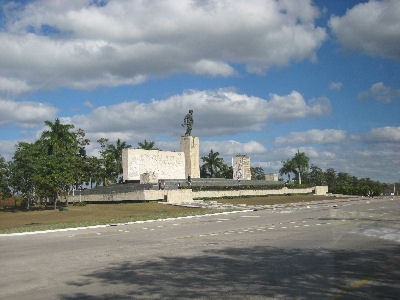
Che, it appears, was an honorable man driven to fighting exploitation. He is a ‘cult’ figure in Cuba. Fidel Castro would not allow his picture to be published so that he would not become an object of veneration by the Cuban people, so they settled on Che- one of his lieutenants.
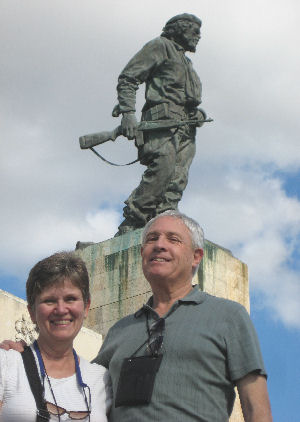

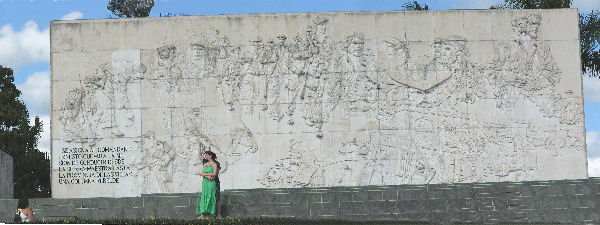

(for a larger, clearer version of Che's letter to Fidel Castro CLICK HERE)
After the bus ride back to the hotel we had some free time so we walked down the street to the park at the end of the peninsula and enjoyed a beautiful sunset.

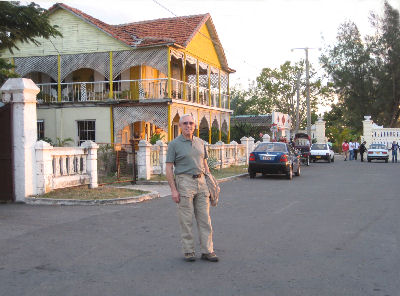
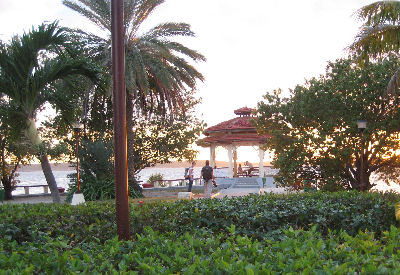
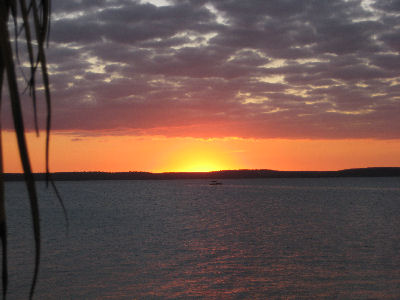

We ate dinner across the street from the hotel al La Casa Verde- paella and sangria with another singing group entertaining us, with Linda singing along.
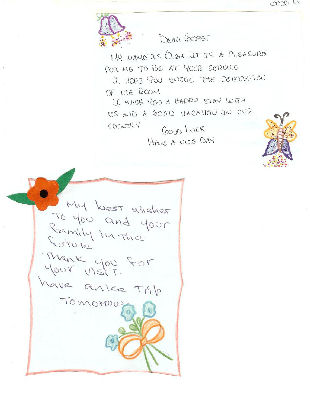
Back at the hotel we packed, ready to move towards Havana in the morning. When we first arrived we had found a note of welcome in the room and now we found another note thanking us for visiting and wishing us a happy trip.
We left Cienfuegos with a stop at the indoor Central Market where we walked among the stalls- Linda, of course, conversing with the vendors. There were quite a few stalls but not a lot of produce or variety.




Hector took us to a ‘bodega’ that accepts ration cards (he showed us his card) and we could see that the offerings were rather sparce.

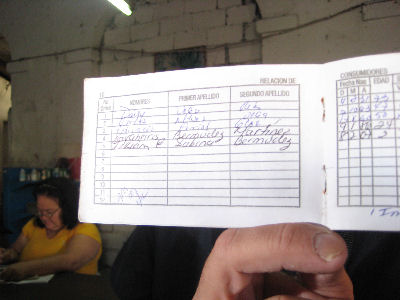
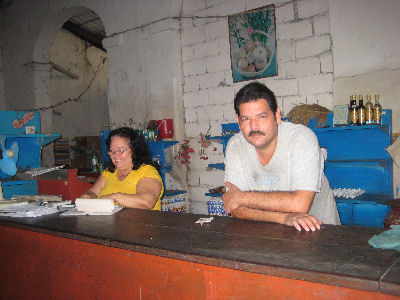

We saw street vendors hawking their wares- garlic and other food items.

Back into the bus and we drove west along the coast towards the Bay of Pigs. We passed small homes and towns and rice paddies and saw, actually drove by and, occasionally, over rice drying on the road surface.

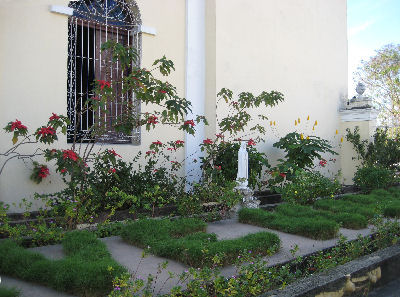




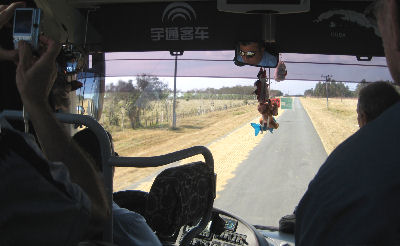

We passed boys playing in a field and stopped so that one of our fellow tour members could present them with a baseball - were they ever excited!


We arrived at the small coastal village of Playa Gordon in the "Zapata" region (so named because the area is shaped like a shoe- a 'zapata')- the site of the 1961 invasion by CIA trained Cuban exiles. The Bay of Pigs museum tells the story of the invasion and the subsequent capture of the exile forces from the Cuban point of view with references to the “CIA mercenaries” and the glorious militias that repulsed the attack. Hector interpreted the museum and its artifacts for us and reminded us that we were in Cuba to hear their side of the story. Lots of homage to Fidel and Che in the many maps, correspondence and pictures, plus rifles, tanks, boats and even a plane. It seems the planes were flown from the South American mainland and were used for bombing targets and troops in Cuba. We saw memorials to the fallen all along the roads in the area.


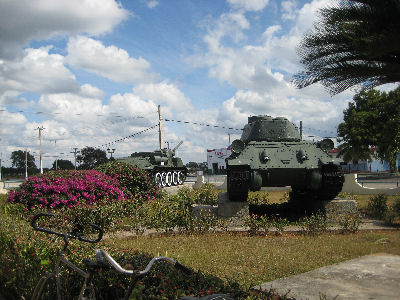
Linda took advantage of a short break to 'check out' a local store.

Lunch was a little way down the coast. It was at a resort located on a coral beach with clear, pristine water lapping up on the shore.



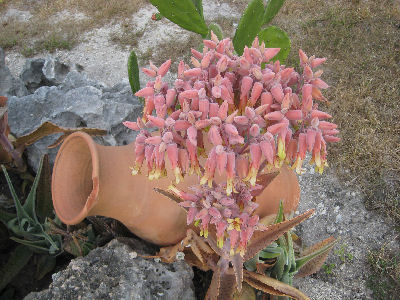

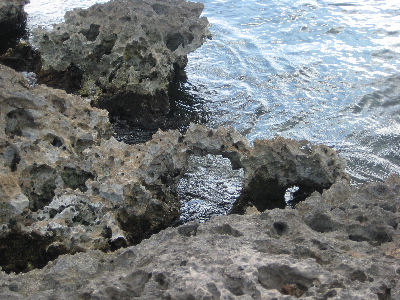
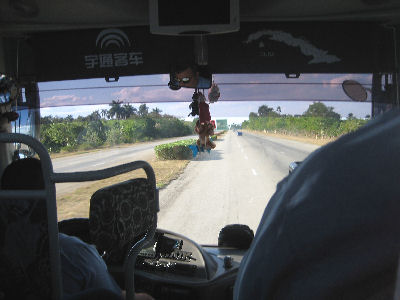
The onto the motorway to Havana- a six lane divided road with almost no cars on it. If we saw 100 cars between the south and north coast it was a lot- a sign of the depressed economy. We did stop for refreshment along the highway...
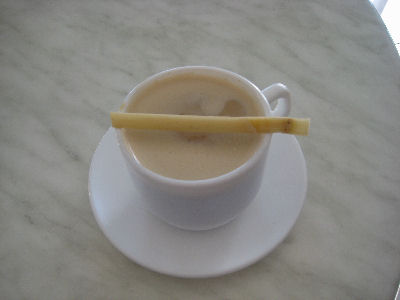
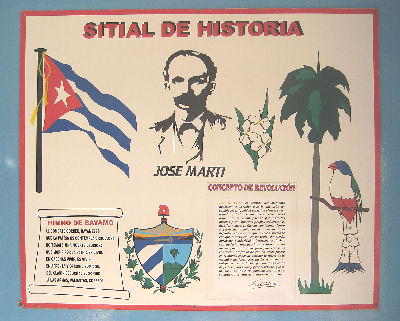
* Click here to continue the trip *
 We listened to a lecture on the current state of Cuban-American activity in Florida delivered by Aimee Betancourt, a Cuban-American and political activist, nearly freezing in the process- it was unseasonably cold outdoors and the air conditioning felt as if it was on maximum. Then dinner and to bed, anxious to start the actual trip to Cuba the next day.
We listened to a lecture on the current state of Cuban-American activity in Florida delivered by Aimee Betancourt, a Cuban-American and political activist, nearly freezing in the process- it was unseasonably cold outdoors and the air conditioning felt as if it was on maximum. Then dinner and to bed, anxious to start the actual trip to Cuba the next day. and breakfast empanada at the gate to the American Eagle twin turboprop that would take us across to Cuba.
and breakfast empanada at the gate to the American Eagle twin turboprop that would take us across to Cuba.










 nice hotel- the best in Cienfuegos with lots of glass and quite clean.
nice hotel- the best in Cienfuegos with lots of glass and quite clean. 





































 `
`



 We went to the Jewish cemetery and saw the Holocaust Memorial which was designed and sculpted by a local gentile. Several of the local people gathered at the gate to watch us.
We went to the Jewish cemetery and saw the Holocaust Memorial which was designed and sculpted by a local gentile. Several of the local people gathered at the gate to watch us.






 ( Click on the picture to see some
dancing and singing - 3 1/2 min )
( Click on the picture to see some
dancing and singing - 3 1/2 min ) 

























